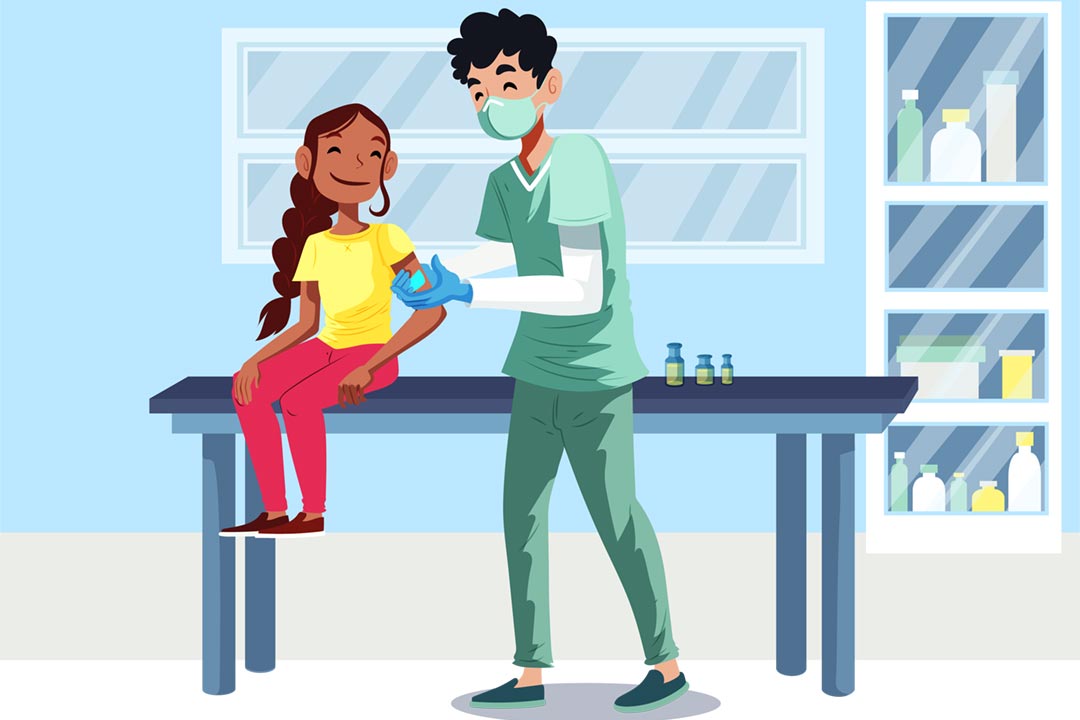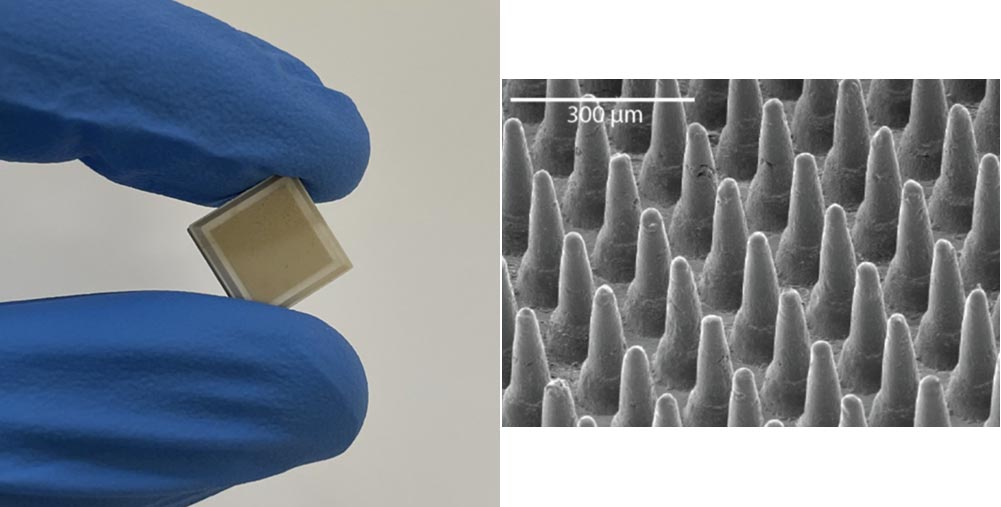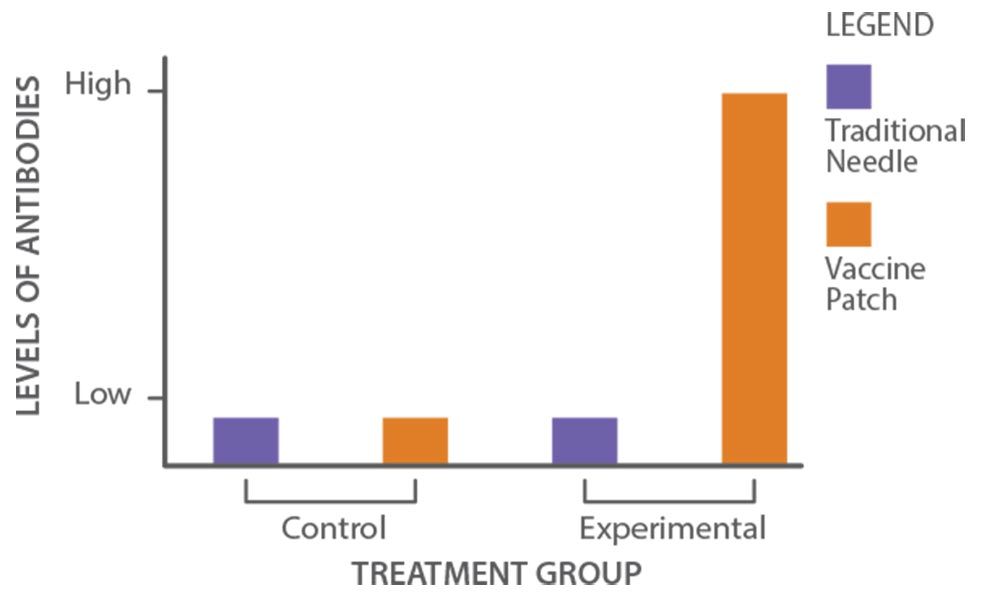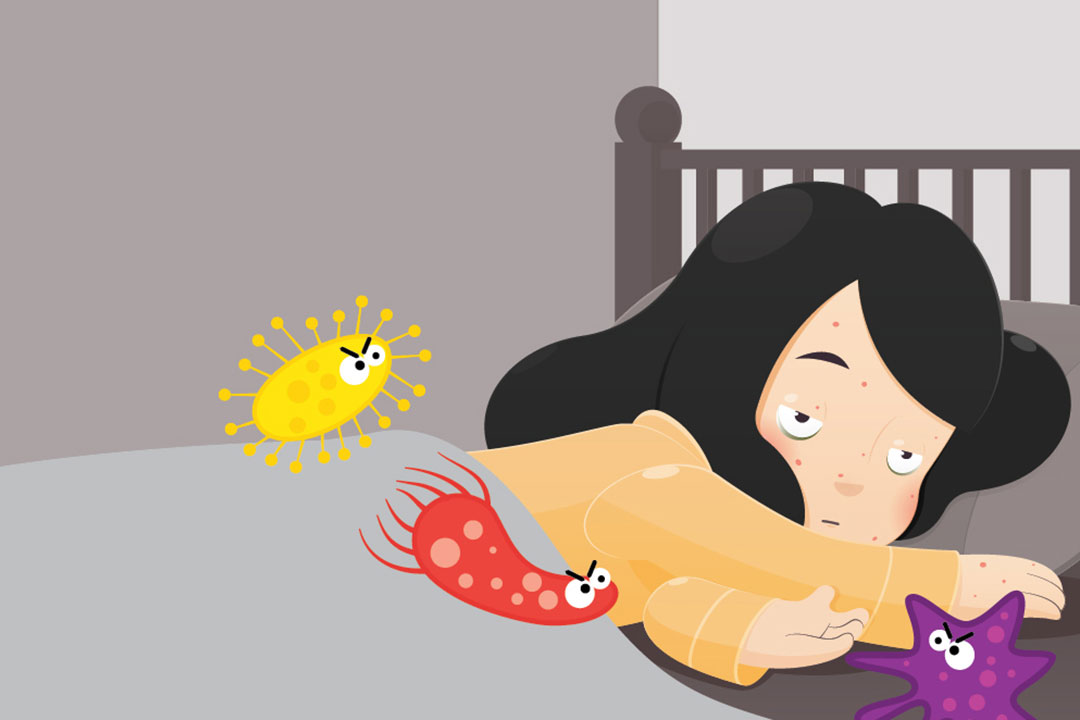Can you get vaccinated without a needle?
Despite vaccines' importance, it can be difficult to get such important medicine to everybody who needs it. We developed a painless vaccine patch that can make vaccines easier to transport. It could also increase access for everyone, especially those who are scared of needles!
- 30 October 2023
- 6 min read
- by Science Journal for Kids and Teens

Introduction
Have you ever been scared to get a shot at the doctor's office? We have developed a new method for delivering vaccinations that doesn’t require a needle. Instead, a small patch with the vaccine on it can be placed on the skin. The patch is applied like a Band-Aid and doesn’t require any special medical training, making it a more accessible option.
Our high-density microarray patch has 5000 small microprojections on it. The patch is like a piece of plastic with microscopic tips (Fig. 1). The vaccine is sprayed onto these tips and then the patch can be applied directly to your skin.

Credit: David A. Muller
One of the important parts of developing a vaccine is making sure it is safe and that it helps your body prevent future infections. It does this by generating antibodies in your immune system. Antibodies are signals in your body that can protect your body from specific infections. The first vaccine was developed to fight smallpox in 1798. Since then, vaccines have helped to get rid of diseases such as smallpox and polio, saving millions of lives.
Methods
First, we wanted to make sure the vaccine patch is stable at a range of temperatures. We tested the patch at 25°C and 40°C and measured the stability of the vaccine that was sprayed onto the microprojections.
Next, we wanted to find out how effective our vaccine patch was compared to a traditional needle. We used 4 groups of mice.
One group received the vaccine patch with the COVID-19 vaccine on it (see Figure 1 on page 1).
The second group received a traditional needle vaccination.
The third and fourth groups were control groups, receiving either a needle injection or patch that had no vaccine in it. We did this so that we could observe the effects of the first two groups and compare them to a group that received no vaccine.
In order to measure how effective the different methods were, we used an ELISA test. This test measured the amount of antibodies that were being produced in each group. The ELISA test changes color depending on the amount of antibodies, showing the level of immune response that each method generated. More antibodies would mean a greater change in color, meaning the method was more effective.
We also used a technique called virus neutralization assays. This showed that the vaccine produced antibodies that could prevent SARS-CoV-2 infection.
Finally, we wanted to ensure the vaccine patch can protect mice from COVID-19 with just a single application. We gave the mice the vaccine patch and used the ELISA scan to measure the levels of antibodies.
Results
Our experiments led to the following key results:
- The vaccine patch provides a tool for delivering vaccines that is thermostable. This means it can withstand a wide range of temperatures while still being effective.
- The vaccine patch resulted in more antibodies being produced when compared to traditional needle vaccines (Fig. 2). This means that they can be at least as effective at delivering a vaccination.
- Mice that received a single dose of the vaccine patch were fully protected from COVID-19.
These results tell us that the vaccine patch is a stable and effective method of delivering the COVID-19 vaccination. They are able to activate the immune system and protect the body from being infected.

Discussion
In this study, we have shown that the vaccine patch is an effective platform for delivering vaccines. Using this system, any vaccine can be sprayed onto the microprojections of the patch and applied directly to the skin, just like putting on a Band-aid. This makes it an important option in the global fight against disease.
It is not possible to fully protect a population from a virus without a vaccine. The vaccine patch provides a platform for vaccinations that can be transported easily and delivered without special training. Its thermostability means that it does not require chilled storage, unlike some other forms of the COVID-19 vaccination. In a 2012 survey, it was found that up to 63% of children are afraid of needles. This fear can contribute to hesitation when it comes to getting vaccinations. The vaccine patch has been developed as a painless, easy alternative that will result in more people being protected from dangerous diseases.
Conclusion
The possibility of getting a vaccination without having to have an injection sounds almost too good to be true, right? But that truth is closer than you might think! In this experiment, we only tested the vaccine patch using the COVID-19 vaccine, but this method can protect us from other diseases as well. Instead of going to the doctor’s office for an injection, you might be able to get a patch from the local pharmacy and be good to go, protecting both you and your community!
Glossary of Key Terms
Antibody – a blood protein produced in response to specific pathogens in the body. It recognizes specific foreign objects in the body and helps produce an immune response.
Control group – a comparative group separate from the treatment group that receives no treatment. The results from the treatment group are compared to the control group in order to try to identify the effects of the treatment.
ELISA – a lab tool used by researchers that can allow them to detect specific proteins. It changes color depending on the amount of antibodies, showing the level of immune response. A greater change in color indicates more antibodies.
Thermostable – able to withstand changes in temperature.
Vaccination – an injection (shot, jab) that introduces a vaccine into your blood.
Vaccine – a fluid that prepares the body for a specific disease, activating the specific immune system. It provides acquired immunity to a specific disease.
Virus neutralization assays – a lab-based test that shows if an antibody can block a virus infecting a cell, neutralizing the virus.
Microprojection – a small projection on the surface of an object.
References
Christopher L. D. McMillan, Jovin J. Y. Choo, Adi Idris, Aroon Supramaniam, Naphak Modhiran, Alberto A. Amarilla, Ariel Isaacs, Stacey T. M. Cheung, Benjamin Liang, Helle Bielefeldt-Ohmann, Armira Azuar, Dhruba Acharya, Gabrielle Kelly, Germain J. P. Fernando, Michael J. Landsberg, Alexander A. Khromykh, Daniel Watterson, Paul R. Young, Nigel A. J. McMillan, and David A. Muller (2021) Complete
protection by a single-dose skin patch–delivered SARS-CoV-2 spike vaccine.
CDC: Benefits for children and teens of getting a COVID-19 vaccine.
The University of Queensland: COVID vaccine patch fights variants better than needles.
Acknowledgment:
This article was funded by a grant from the United States Department of State. The opinions, findings, and conclusions stated herein are those of the authors and do not necessarily reflect those of the United States Department of State.
Written by
David A. Muller,
Cristopher L. D. McMillan,
Jovin J.Y. Choo, and Others
Associate editors:
Jared Smith and Fiona Firth
Website
This article was originally published by Science Journal for Kids and Teens in December 2022.








